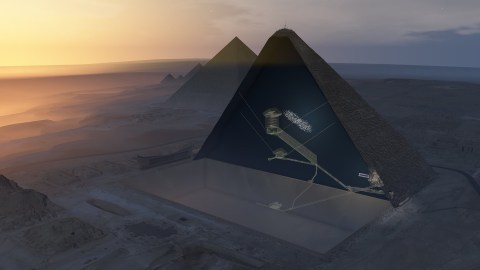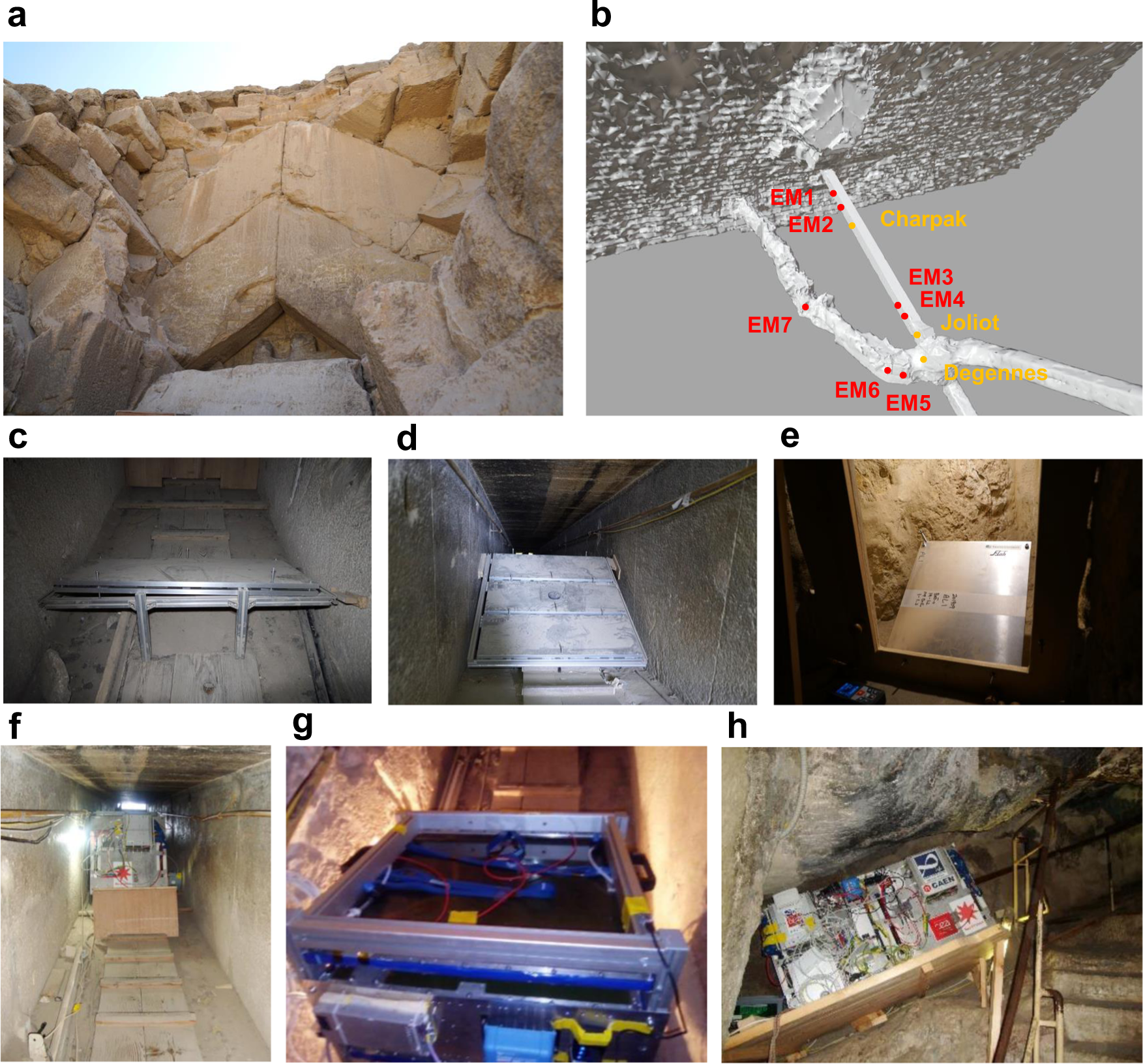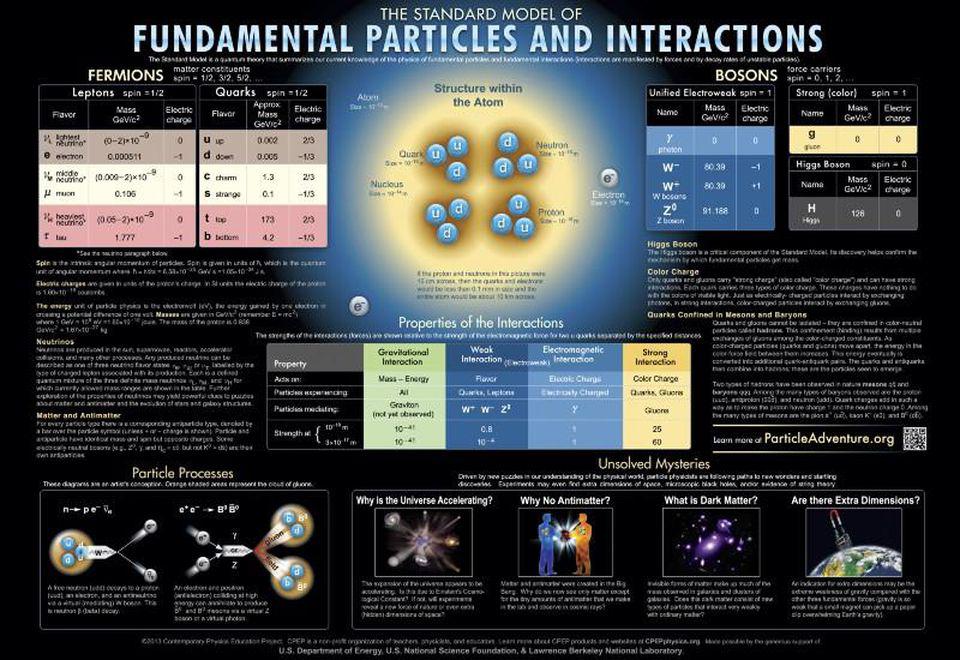Cosmic rays passing through Great Pyramid help reveal hidden corridor

- The Great Pyramid is the last standing structure of the Seven Wonders of the Ancient World.
- Mysteries still remain about what’s inside the pyramid.
- Building upon previous research, a recent study unveiled new details about the internal structure of the pyramid by using a non-invasive technique called muon tomography.
Of the Seven Wonders of the Ancient World, only one is left standing: the Great Pyramid, located on the Giza plateau in Egypt. Built by the pharaoh Khufu about 4,500 years ago, it was the tallest human-made building on the planet until it was eclipsed in 1889 by the Eiffel Tower. It remains an enduring testament to the ingenuity and determination of humanity.
It’s also an edifice shrouded in mystery. Was it ever used as a burial chamber? Are there undiscovered cavities inside it? If a mummy is hidden somewhere inside, does the mummy also have a curse? Was it built using UFO technology? (Okay, some mysteries are more realistic than others, but many unanswered questions still remain.)
A paper recently published in Nature Communications has lifted the veil on at least one of these mysteries. Using implacable radiation from outer space and technology first developed for use in particle accelerators, scientists collaborating with the project Scan Pyramids have discovered a new passageway inside the Great Pyramid.
A nondestructive way to explore ancient structures
Unlike in the 19th century, when archaeologists could dig pretty much anywhere they wanted, nowadays conservation is a priority. Scientists need to develop the ability to look inside large structures like the Great Pyramid without damaging them. Essentially, what they need is a giant X-ray machine.
But X-rays won’t work to peer inside such big structures; they can only penetrate very small distances in rock. So researchers needed a different approach, and the answer came from space.
The Earth is constantly pummeled by high energy particles that originated near violent astrophysical phenomena, like black holes and exploding stars. These high energy particles slam into the Earth’s atmosphere and, in the process, transmute themselves into particles called cosmic ray muons.
Muons are essentially heavy cousins of the familiar electrons found surrounding atoms. Muons are heavier than electrons and they are unstable, decaying in a few millionths of a second. However, that short lifetime is long enough for them to pass through the Earth’s atmosphere and hit the Earth’s surface.
Muons have a very important property: They interact fairly weakly with matter as it passes through them. Thus, muons can penetrate significant distances in rock. Muons with sufficiently high energy can pass through 100 meters of rock — about the length of a football field.
But muons don’t pass through matter unscathed. They lose energy along the way, almost exactly like how a car loses energy to skid marks when you slam on the brakes. And this turns out to be a useful thing.
Scientists first use their detectors to measure the rate of muons coming from the sky. Then they do the same thing after they put something big and massive in the way. The massive object stops some of the muons — the ones that don’t have enough energy to punch through — and lets the rest through.
Now here’s the cool part: If the massive object has a void in it somewhere, when the muon hits the void and passes through air it doesn’t lose energy. The skid mark stops, to return to our analogy. And then, when the muon gets back into dense material, the skid mark starts again.
The upshot is that when you look at muons passing through a big object like the Great Pyramid, it will only let some muons through. However, if the muons pass through a void, more muons will make it to your detector. Thus, you can identify the location of voids by looking for jumps in the rate of muon detection as you scan your detector across the pyramid.
This approach only shows you where the voids are in one dimension. But if you move your detector to look in different directions, you can eventually build up a three-dimensional image of the void. This is the same technique as when you get a medical CT scan (where CT means “computerized tomography). The technique using muons is called “muon tomography,” or occasionally “muography.”
Mapping a previously unknown tunnel
Researchers in Japan have been using this technique to effectively X-ray the Great Pyramid. In the recent paper, scientists found a previously unknown tunnel in the structure about 2 meters square and 9 meters long (6’ x 30’).
This is not the first void found in the Great Pyramid. In 2017, some of the same researchers found an even larger void, about 30 meters (100’) long. So far, nobody knows what is in these voids.

(Credit: Procureur et al., Nature Communications, 2023)
As tantalizing it is to imagine that a treasure trove of ancient Egyptian artifacts will be found in the chambers, we know that this is not true of the smaller void. Scientists were able to insert an endoscope (a long and flexible camera) into the space but they did not see any objects. Because of the location of the newly discovered voids, they are thought to simply be architectural features, built into the pyramid to reduce weight and strain on the tunnels and chambers below them, which Egyptologists have known about for a long time. Still, we have no information about what is in the larger void.
Egyptian archaeological authorities are aware of these discoveries and there is a debate in the scientific community over how to proceed. Researchers are weighing the benefits of looking inside the bigger void against the fact that any attempt to get to it will do permanent damage to the pyramid.
As exciting as this new discovery is, muon tomography has other uses as well. Researchers have used the technique to look inside volcanoes and to measure the water content trapped in the atmosphere inside intense storms. The technique also has the potential to look inside nuclear reactors.
While it is too soon to know exactly what researchers have found, there is no doubt that muon tomography brings a new capability to archaeology. Scientists have only begun to tap the technique’s capabilities.




